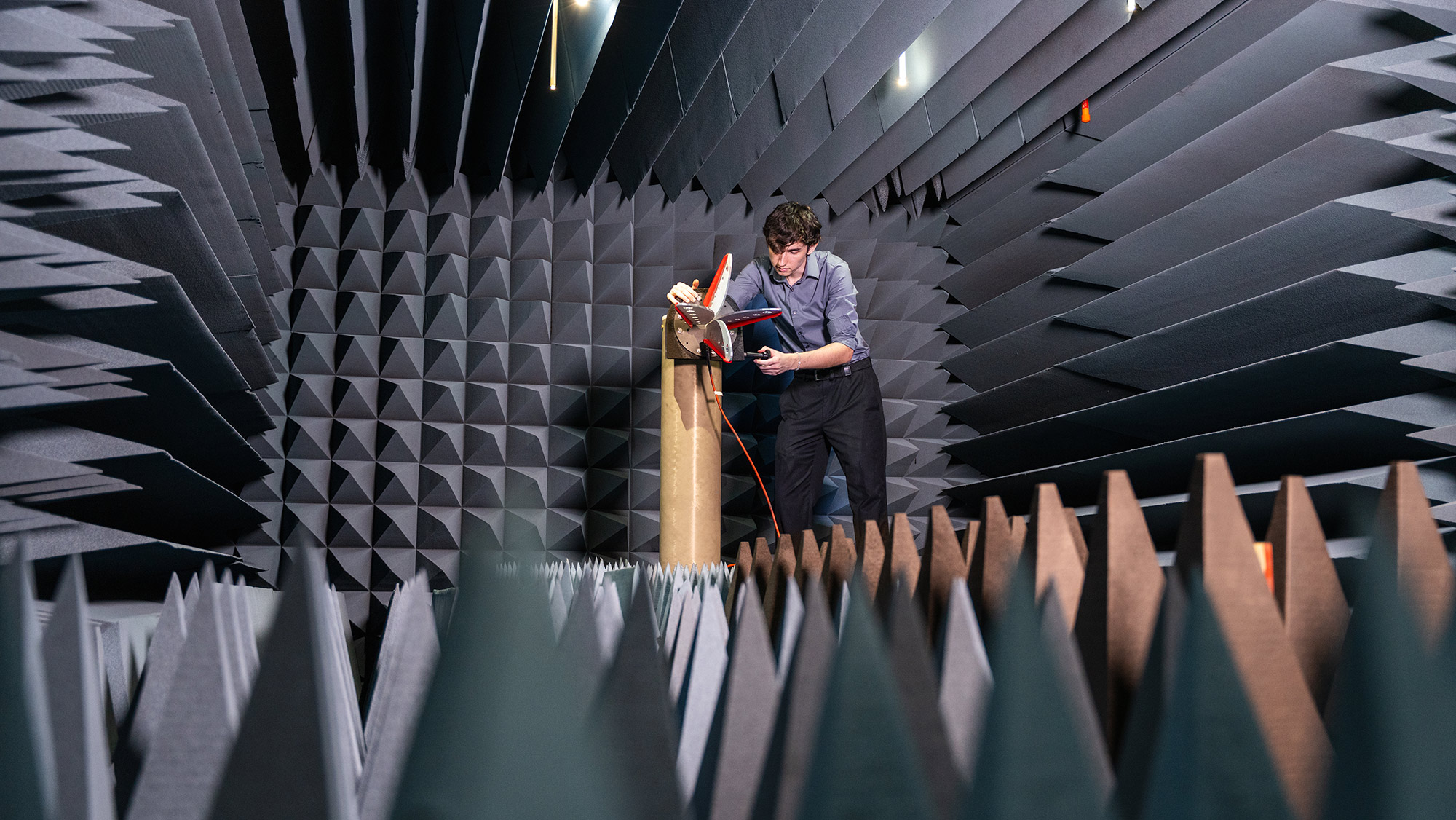
From drones to security systems, a team of researchers at Texas A&M University is reimagining how future technologies sense and process the world around them. With a new National Science Foundation grant, they are creating advanced digital twins of intelligent computer chips that could revolutionize how devices gather and use information.
The project, titled “ACED: Digital Twin for an Intelligent Electromagnetic Sensor on a Chip (iEM-SoC),” is led by Dr. Linda Katehi, professor in the Department of Electrical and Computer Engineering, in collaboration with Dr. Jian Tao, assistant professor in the College of Performance, Visualization and Fine Arts. The team is developing smarter, faster and more energy-efficient electronics, starting with digital twin technology.
A digital twin is a virtual replica of a physical device or system. It simulates how the real system behaves under various conditions, making it a valuable tool for testing, optimization and innovation, all without the cost or time involved in building physical prototypes.
“This will be the first digital twin of a full receiver, from antenna to digital output, that can make autonomous decisions about how to analyze the electromagnetic spectrum,” said Katehi. “It will completely change how we design and optimize sensor systems.”
Today’s computers and sensors, while powerful, have limitations. Storing memory and processing data require significant time and energy, especially for small, mobile technologies like drones, smart devices and embedded sensors. Traditional systems are not built to learn or adapt quickly.
To overcome these challenges, researchers are turning to neuromorphic memory technologies — advanced memory systems — that mimic a human brain, capable of learning and remembering simultaneously. These systems could lead to significant gains in performance and energy efficiency.
This will be the first digital twin of a full receiver, from antenna to digital output, that can make autonomous decisions about how to analyze the electromagnetic spectrum. It will completely change how we design and optimize sensor systems.
But there’s a catch: these cutting-edge chips are expensive to fabricate and not readily available. That makes it costly and time-consuming to experiment with new designs. That’s where digital twins come in. Before physically building a next-generation sensor, researchers can try it out virtually by adjusting parameters, running simulations, and learning what works best.
“We’re building a digital environment that mirrors the physics of the actual chips, so we can test and refine ideas virtually,” Tao said.
The goal is to develop a digital twin for an intelligent electromagnetic receiver used in defense, industrial automation or environmental monitoring. This approach is novel because the receiver uses AI to autonomously decide which parts of the electromagnetic spectrum to monitor, classify signals in real time, and adapt to its environment, without needing external input.
These edge sensors process data locally rather than sending everything back to a central computer. This is crucial for real-time applications like autonomous vehicles, drones or surveillance systems, where speed and decision-making at the source are key.
By using a digital twin, the team can design and simulate the entire signal pathway, from antenna to amplifier to memory, all virtually. This allows for rapid experimentation with various semiconductor materials, memory types (including memristors, a brain-inspired technology), and processing strategies.
“It took us almost 40 years to build and test our current intelligent receiver,” said Katehi. “With this digital twin, we hope future researchers can do it in a fraction of that time.”
The interdisciplinary project includes the Department of Electrical and Computer Engineering, the Texas A&M Semiconductor Institute, the Texas A&M Institute of Data Science and the Texas A&M College of Performance, Visualization and Fine Arts. This cross-departmental and cross-disciplinary approach will help the team model the chips and also visualize and simulate complex systems in innovative ways.
“We’re working across disciplines to make this tool accessible to others, so anyone designing a next-gen sensor system can start with this platform and build from it,” said Tao.
Funding for this research is administered by the Texas A&M Engineering Experiment Station (TEES), the official research agency for Texas A&M Engineering.